Many people dream of driverless cars taking us where we need to go. This idea has excited investors, who have poured billions into it. Autonomous driving could change how we travel, behave, and live together.
It could make the car industry worth hundreds of billions of dollars by the end of the decade. Driving could become safer, easier, and more fun. The market for AD systems could grow, making billions in revenue, especially in the car market by 2035.
Key Takeaways
- Autonomous vehicles (AVs) have the potential to revolutionize transportation and create significant value for the auto industry, consumers, and society.
- Autonomous driving could make driving safer, more convenient, and more enjoyable by reducing accidents, improving traffic flow, and providing greater accessibility.
- The demand for autonomous driving systems is expected to grow rapidly, with ADAS and AD potentially generating up to $400 billion in revenue by 2035.
- Autonomous vehicles are poised to transform consumer behavior and mobility, with the promise of more efficient and sustainable transportation solutions.
- Continued advancements in sensor technology, computing power, and artificial intelligence are driving the development of autonomous vehicle capabilities.
The Transformative Potential of Autonomous Driving
The rise of autonomous driving is set to change how we travel, making it safer, more convenient, and better for the planet. As this tech gets better, we see more benefits for everyone.
Also Read : What Is Blockchain Technology And How Does It Work?
Consumer Benefits of Autonomous Driving
Autonomous cars can make driving safer and more fun. They cut down on accidents by reducing human mistakes. This means drivers can relax or get work done while driving.
Also Read : Automation: Streamlining Your Business Processes
Societal and Environmental Impacts
Autonomous cars also bring big changes for society and the environment. They help the elderly and disabled travel more easily. Plus, they use less fuel and pollute less, making our air cleaner.
Also Read : Agricultural Technology: Revolutionizing Farming
| Benefit | Description |
|---|---|
| Safety | Autonomous vehicles can potentially reduce accidents by about 15% by 2030, thanks to advanced driver-assistance systems (ADAS). |
| Convenience | Autonomous features can allow drivers to multitask or relax during their commute, improving overall driving experience. |
| Productivity | Autonomous vehicles can increase worker productivity by enabling them to perform work tasks while in transit. |
| Mobility | Autonomous driving can improve mobility options for the elderly and individuals with disabilities, granting them greater independence. |
| Environmental Impact | The increased fuel efficiency and reduced emissions of autonomous vehicles can contribute to a more sustainable transportation ecosystem. |
Autonomous driving is more than just a tech trend. It’s changing how we travel and live together. As it keeps getting better, we’ll see even more good changes for all of us.
Also Read : 5G Technology: The Future Of Wireless Connectivity
Current State and Adoption of Autonomous Vehicles
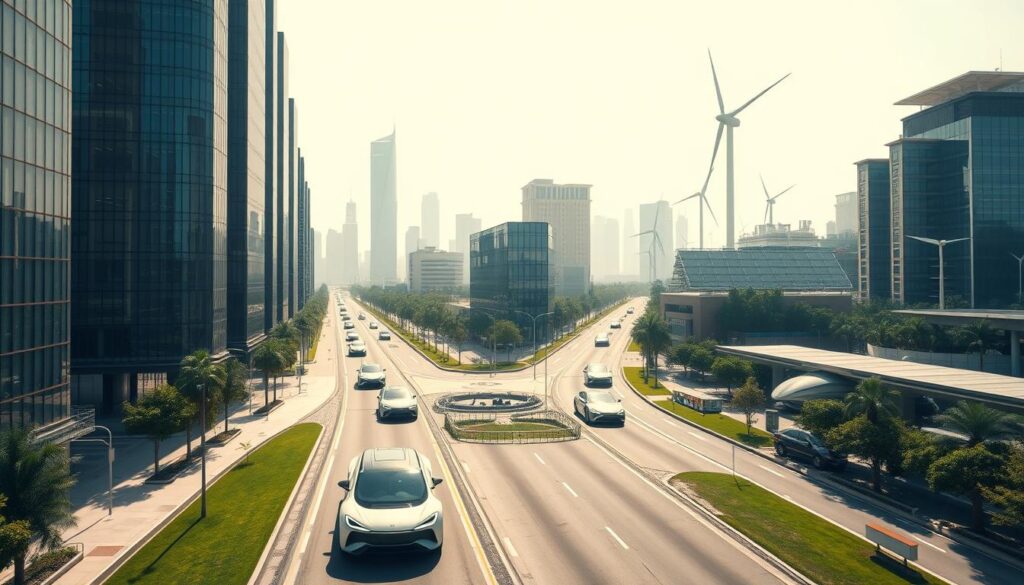
The world of autonomous vehicles (AVs) is changing fast. More and more people are starting to use this new tech. The Society of Automotive Engineers (SAE) has set out levels to show how far AVs have come.
Also Read : Building A Robust Network Infrastructure
Levels of Driving Automation
Most cars today have basic features like lane-keeping and adaptive cruise control. These are SAE Levels 1 and 2. They help drivers but don’t take full control of the car.
But, the goal is to get to SAE Level 4. This means driverless control under certain conditions. It could change many industries, like ride-sharing and delivery.
Early Adopters and Niche Markets
At first, AVs will be expensive. So, businesses and special groups will use them first. Companies like ride-sharing and delivery services will see big benefits.
They’ll get better service, be safer, and work more efficiently. This is because AVs can handle tasks on their own.
| Early Adopter Segment | Potential Benefits |
|---|---|
| Ride-sharing | Improved customer experience, reduced labor costs |
| Delivery Vehicles | Enhanced efficiency, consistent service quality |
| Commercial Applications (e.g., platoon trucks) | Increased productivity, improved safety, and reduced fuel consumption |
As AVs get cheaper and better, they’ll become more common. They’ll change how we travel and do business.
Autonomous Vehicle Technology and Innovations
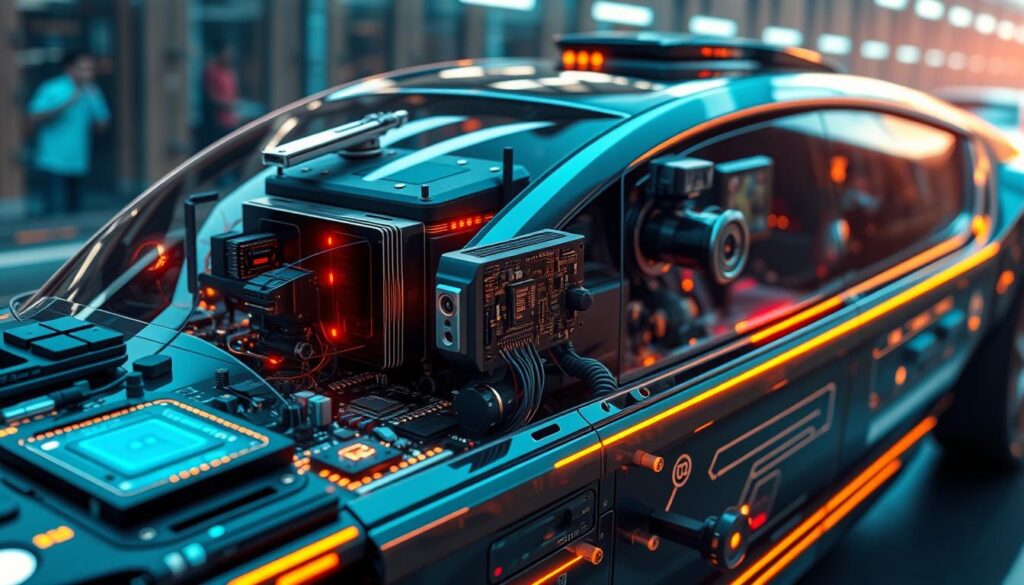
Autonomous vehicles use advanced technologies to drive safely and efficiently. At their core are sensors and computing systems. These work together to understand the environment, process data, and make quick decisions.
Sensors and Computing Power
Light detection and ranging (LiDAR) systems are key in autonomous vehicles. They use light and radar to measure objects’ speed and distance. This creates a detailed 3D map of the surroundings.
Cameras and radar sensors give a 360-degree view of the environment. They are placed around the vehicle. This setup helps the vehicle understand its surroundings fully.
High-performance computing and advanced algorithms are needed to handle the data from these sensors. Deep learning, a part of artificial intelligence, helps the vehicle make decisions quickly. It adapts to changing road conditions and traffic.
Artificial Intelligence and Machine Learning
Artificial intelligence and machine learning lead the way in autonomous vehicle technology. These technologies allow vehicles to see their surroundings, predict dangers, and act accordingly. They do this all without human help.
- Machine learning algorithms help vehicles learn and get better at making decisions. They use big datasets and real-world experiences.
- Deep learning models, with the help of powerful computing, can handle complex data. They can identify objects and predict how others will act.
- The mix of artificial intelligence and machine learning is crucial. It helps vehicles deal with the unpredictable roads. This ensures a safe and smooth ride.
“The convergence of sensors, computing power, and artificial intelligence is the driving force behind the autonomous vehicle revolution.”
Challenges and Roadblocks for autonomous vehicles

Autonomous vehicles face many challenges on their path to widespread use. One big issue is the different rules in each of the 50 states. This makes it hard for companies to follow all the laws and safety standards.
Another big problem is figuring out who is to blame in an accident. It’s not clear if it’s the car maker, the software creator, or the car owner. This makes it hard to use self-driving cars everywhere.
- Data protection and privacy are also big concerns. The data collected by these cars raises questions about how it’s stored and used.
- The high initial cost of these cars is another issue. They are expensive, which makes them hard for many people to buy.
To make autonomous vehicles work, we need to solve these problems. We need everyone involved to work together. This includes policymakers, car makers, and tech companies.
“The path to autonomous vehicle adoption is paved with complex regulatory, legal, and technological hurdles that must be navigated with care and collaboration.”
Regulatory Landscape and Policy Implications
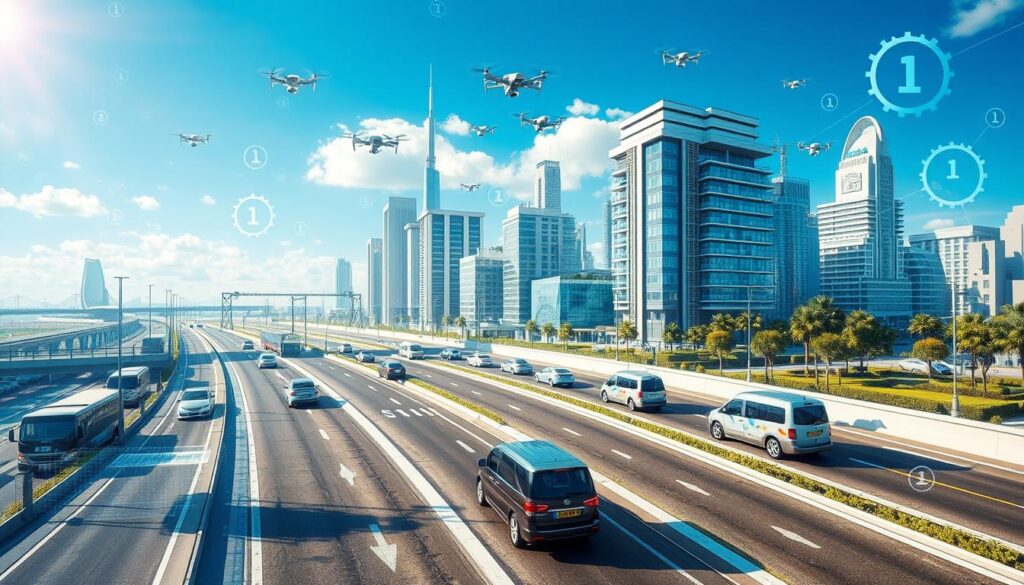
Autonomous vehicles are getting more advanced, but the rules around them are getting more complex. It’s important to navigate these rules carefully. This ensures innovation and keeps the public safe and their data private.
State Regulations and Guidelines
States are leading the way in making rules for self-driving cars. Places like California, Florida, and Michigan have laws for testing and using these cars. These laws cover things like driver licenses, vehicle registration, and safety.
But, having different rules in each state can be a problem. It makes it hard for companies to use self-driving cars in many places.
Federal Initiatives and Frameworks
The National Highway Traffic Safety Administration (NHTSA) is working on federal rules for self-driving cars. They aim to make guidelines for makers, set safety standards, and deal with liability. They plan to release new rules soon.
These rules will help innovation and keep people safe. They will also make sure the rules are the same everywhere, and help with new car development.
But, the rules are still not clear. The government says self-driving cars need a steering wheel and brakes, and a driver must be there. Some say this could slow down the use of self-driving cars and lead to misuse.
As self-driving cars get better, it’s important for all levels of government to work together. They need to make rules that help innovation but also keep people safe and protect their data. Finding this balance is crucial for the success of self-driving cars.
Safety and Liability Concerns
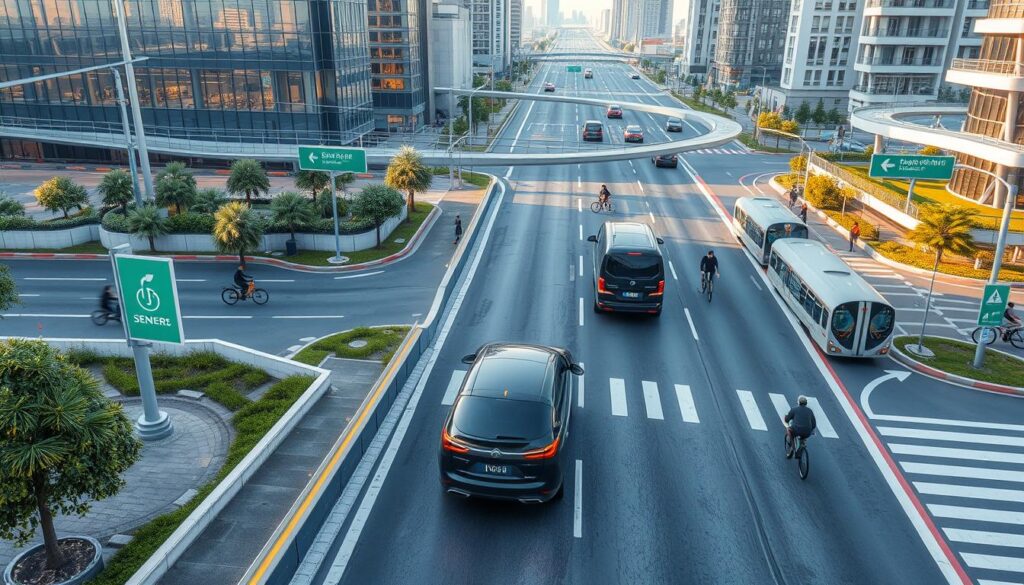
Autonomous vehicles are becoming more common on our roads. This raises important questions about safety and liability. These advanced technologies could greatly reduce traffic fatalities. But, there are still concerns that need to be tackled.
Accident Prevention and Reduction
Autonomous vehicles could prevent many accidents. In the U.S., 94% of accidents are caused by human error, like distracted or drunk driving. These vehicles, with their advanced sensors and quick decision-making, could cut down on these causes.
Also, they could help fight drunk driving, which causes 39% of U.S. crash fatalities. By taking humans out of driving, these vehicles could lower deaths and injuries from alcohol-impaired driving.
“Autonomous vehicles have the potential to revolutionize transportation safety, but the industry must address liability concerns to build public trust.”
But, there are worries about who is liable if an accident happens. Questions might pop up about who is at fault – the car maker, the software creator, the owner, or someone else. It’s key to sort out these liability issues with clear rules and policies for autonomous vehicles to be widely accepted.
As the tech improves, policymakers and industry leaders must work together. They need to make sure safety and liability issues are fully covered. This will help us move towards a future with fewer traffic deaths and a safer way to travel.
autonomous vehicles and the Future of Mobility
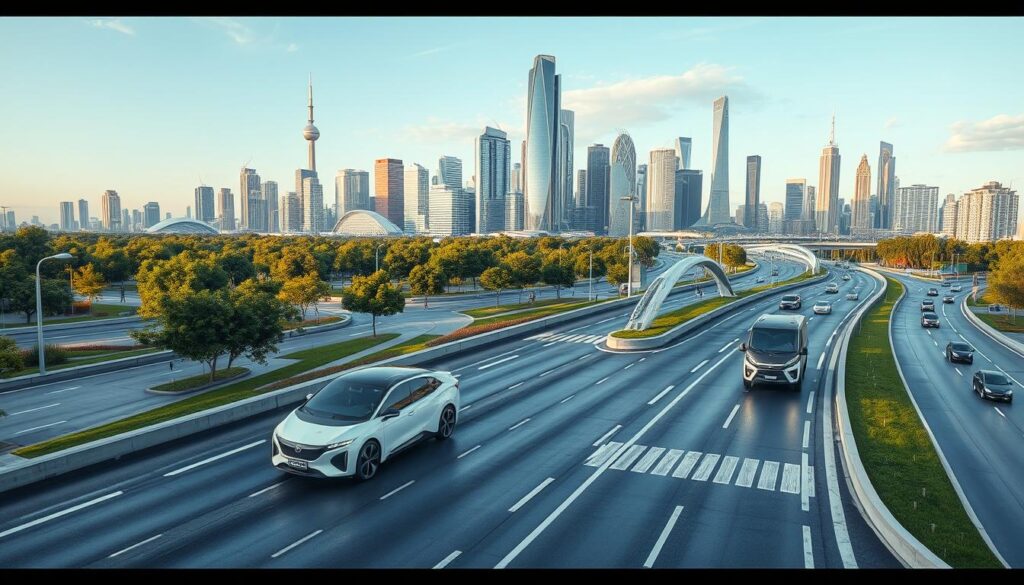
The rise of autonomous vehicles is set to change the future of transportation. These advanced vehicles will impact our transportation systems and open up new ways to make money.
Impact on Transportation and Infrastructure
Autonomous vehicles could make a big difference in how we travel. They could cut down on traffic jams and pollution. By using less fuel and moving more smoothly, they could make our roads better.
These vehicles might also make our roads safer. They could cut down on accidents by taking away human mistakes. This could save a lot of money on insurance and help emergency services.
New Business Models and Revenue Streams
- Ride-sharing and on-demand delivery services: Autonomous vehicles could lead to new business ideas. This could bring in money for car makers, tech companies, and service providers.
- Parking and traffic management: They might also make money through better parking and traffic solutions. With fewer parking spots needed, there could be new ways to make money.
- Environmental benefits: By reducing traffic and emissions, they could help the environment. This could open up new money-making opportunities in green tech and sustainability.
But, the rise of autonomous vehicles might also shake up some industries. Taxi and insurance services could see big changes as human drivers become less needed.
“The future of mobility is autonomous, and it’s going to reshape our cities, our businesses, and our lives in profound ways.”
Also Read : How Does Digital Transformation Affect Businesses?
Conclusion
Autonomous vehicle technology is changing how we travel fast. It promises to make our lives easier and better for the planet. But, getting these cars on the road is tough. We need everyone to work together to make it happen.
As we move forward, we must deal with many issues. This includes making rules, ensuring safety, and solving technical problems. By working together, we can make self-driving cars a reality. This will change how we travel and live.
Autonomous vehicles offer many benefits, like less traffic and cleaner air. They also open up new ways to make money. But, we must also think about the challenges. We need to build trust, protect privacy, and consider jobs.
As we embrace self-driving cars, we must stay open to change. We need to be creative and think about the future. This technology has the power to make our world better for everyone.
FAQs
Q: What is a self-driving car?
A: A self-driving car, also known as an autonomous car, is a motor vehicle that can operate without human intervention using a combination of sensors, cameras, and artificial intelligence technologies.
Q: How do fully autonomous vehicles differ from traditional vehicles?
A: Fully autonomous vehicles are equipped with advanced automated driving systems that allow them to navigate and operate the vehicle without a human driver, unlike traditional vehicles which require constant human control.
Q: What is the future of autonomous vehicles in urban areas?
A: The future of autonomous vehicles in urban areas includes the potential to reduce congestion, enhance safety, and improve efficiency in transportation systems, making cities more accessible and reducing the number of vehicles on the road.
Q: What levels of automation are there for self-driving vehicles?
A: There are six levels of automation for self-driving vehicles, ranging from Level 0 (no automation) to Level 5 (full automation). Levels 4 and 5 represent highly automated vehicles that can operate without human intervention in most scenarios.
Q: How are car companies testing driverless vehicles?
A: Car companies are testing driverless vehicles through rigorous testing programs that include both closed-course testing and real-world trials on public roads, often in partnership with universities and research institutions like the University of Michigan.
Q: What role does connected and automated technology play in the future of autonomous vehicles?
A: Connected and automated technology enhances the operation of autonomous vehicles by allowing them to communicate with each other and infrastructure, improving safety and efficiency through real-time data sharing and coordination.
Q: Are electric vehicles part of the autonomous vehicle market?
A: Yes, many electric vehicles are being developed with autonomous technology, as the integration of automated driving systems and electric powertrains is seen as a key component of the future of autonomous vehicles.
Q: What are the safety concerns related to the operation of autonomous vehicles?
A: Safety concerns related to the operation of autonomous vehicles include the potential for vehicle crashes, the reliability of automated driving systems, and the need for a safety driver during testing phases to ensure immediate control if needed.
Q: How does the Department of Motor Vehicles regulate autonomous vehicles?
A: The Department of Motor Vehicles regulates autonomous vehicles by establishing guidelines for testing, licensing, and the operation of automated vehicles on public roads, ensuring they meet safety standards before they can be deployed commercially.


